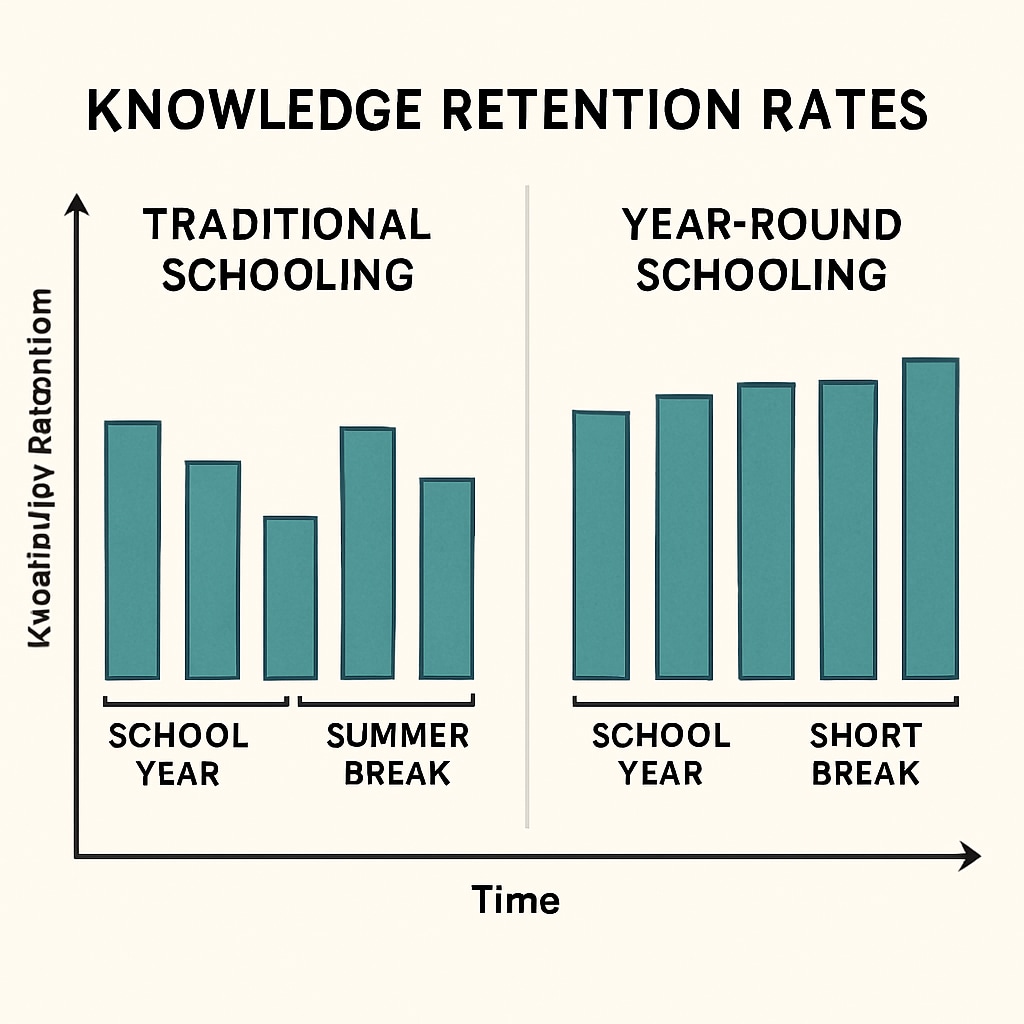Year-round schooling, knowledge retention, and learning continuity have become critical topics in modern education. The traditional academic calendar with a long summer break, while deeply ingrained in our culture, has shown significant drawbacks. Chief among these is the “summer slide”—a phenomenon where students lose a substantial amount of knowledge during extended breaks. Could breaking this cycle through year-round schooling enhance learning outcomes? Let’s explore the potential benefits of a more continuous learning model, such as “one week on, one week off,” and its impact on students.
The Problem with the Traditional Academic Calendar
The conventional educational system, which includes a lengthy summer vacation, was originally designed for an agrarian society where children were needed to work on farms. However, in today’s fast-paced, knowledge-based economy, this system may no longer serve students’ best interests. Studies have shown that students often forget 20-30% of what they learned in the previous school year during the summer break. This loss disproportionately affects students from underprivileged backgrounds, further widening the achievement gap.
For example, a study published by the National Summer Learning Association revealed that summer learning loss can leave students nearly two months behind in math and reading skills. In addition, teachers often have to spend the first few weeks of the new school year re-teaching material, which reduces time for new learning. This inefficiency suggests the need for a restructured, continuous learning approach.

Year-Round Schooling: A Better Alternative?
Year-round schooling offers a solution to the “summer slide.” Instead of a long summer break, this model redistributes vacation days throughout the year. For instance, a “one week on, one week off” schedule could ensure that students have regular breaks to recharge without losing momentum in their learning. This approach maintains academic continuity while addressing the problem of knowledge retention.
There are several benefits to this model:
- Consistent Learning: Short, frequent breaks prevent burnout and help students retain information more effectively.
- Equity in Education: Students from disadvantaged backgrounds are less likely to experience significant learning losses with shorter breaks.
- Flexibility: Families can plan vacations during off-peak times, reducing travel costs and crowds.
Many schools worldwide have already adopted this approach with positive results. For example, in Japan, students attend school year-round with shorter breaks, and their academic performance consistently ranks among the highest globally. Similarly, some districts in the United States implementing year-round calendars have reported improved test scores and student engagement.

Challenges and Considerations
Despite its advantages, year-round schooling is not without challenges. Transitioning to a new calendar requires logistical adjustments, including changes to transportation, extracurricular activities, and family routines. Additionally, some argue that extended breaks are necessary for children to explore non-academic interests, such as sports, arts, and family time.
However, these challenges are not insurmountable. Flexible scheduling and community involvement can help address these concerns. For example, schools could offer enrichment programs during breaks to provide opportunities for extracurricular development while maintaining academic consistency.
Looking Ahead: A Call for Change
The debate over year-round schooling is far from settled, but its potential to enhance knowledge retention and learning continuity is undeniable. As we move toward a more interconnected and demanding global economy, rethinking traditional education models is essential. By adopting innovative approaches like “one week on, one week off,” we can provide students with the tools they need to succeed academically and beyond.
In conclusion, year-round schooling could be the key to addressing the inefficiencies of the traditional academic calendar. While challenges remain, the benefits of improved knowledge retention, equity, and flexibility make it a compelling option for the future of education.
Readability guidance: Short paragraphs and frequent transitions ensure clarity. Lists summarize key points effectively. Active voice and simple language enhance engagement, while external references provide credibility.


